Fresh, crunchy, and full of flavor, iceberg lettuce is a garden favorite — perfect for salads, wraps, and sandwiches. But what if you don’t have space for a large garden bed? The good news is you can easily grow iceberg lettuce in plastic bottles, even hanging them vertically to save space! This creative, eco-friendly method lets you turn ordinary waste bottles into thriving mini gardens — ideal for balconies, patios, or even windowsills.
In this detailed guide, we’ll show you how to grow iceberg lettuce at home using hanging plastic bottles — starting from seed and leading you all the way to a beautiful, crisp harvest.
1. Why Grow Iceberg Lettuce in Hanging Plastic Bottles?
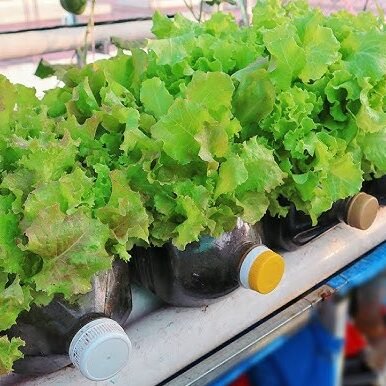
Using hanging plastic bottles for gardening is one of the most sustainable and practical ways to grow fresh food at home. Iceberg lettuce, with its shallow roots and compact growth habit, is perfectly suited for this type of container system.
Here are some key benefits of growing iceberg lettuce this way:
- Space-saving: You can hang bottles along walls, balconies, or fences.
- Water-efficient: Bottles retain moisture longer, reducing water waste.
- Better sunlight exposure: Hanging plants get more even sunlight.
- Eco-friendly: Reuses plastic waste and promotes sustainable gardening.
- Fresh and chemical-free: Grow your own crisp lettuce without pesticides.
It’s a simple project that yields big rewards — both for your kitchen and the planet!
2. Materials You’ll Need
Before you start, gather these basic items:
- 1–2 large plastic bottles (1.5L to 2L size)
- Sharp knife or scissors for cutting holes
- Strong rope, string, or wire for hanging
- Potting mix rich in compost and organic matter
- Iceberg lettuce seeds
- Small tray or container for seed germination
- Watering can or spray bottle
- Optional: slow-release fertilizer or organic compost tea
All of these materials are easy to find and inexpensive — most might already be in your home!
3. Preparing the Plastic Bottle Planter
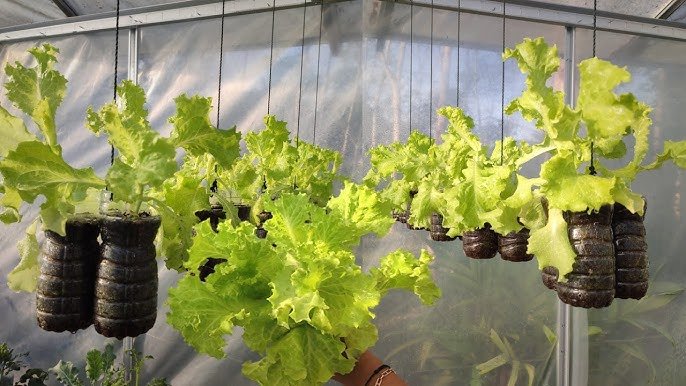
Now, let’s turn your old plastic bottle into a smart hanging garden container:
- Clean the Bottle:
Rinse thoroughly to remove any labels, chemicals, or residue. - Cut an Opening:
Using scissors or a knife, cut a large rectangular or circular hole on one side of the bottle (this is where your lettuce will grow). Leave at least 2–3 inches of space from the bottom to hold soil. - Make Drainage Holes:
Poke a few small holes at the bottom for excess water to escape. Good drainage prevents root rot. - Add Hanging Holes:
Make two small holes near the top and thread your rope or wire through them. Tie securely to create a hanging loop. - Fill with Soil:
Add a light, well-draining potting mix. A good blend includes garden soil, compost, and coco peat or perlite to keep it airy.
Now your bottle planter is ready for seeds!
4. Starting Iceberg Lettuce from Seeds
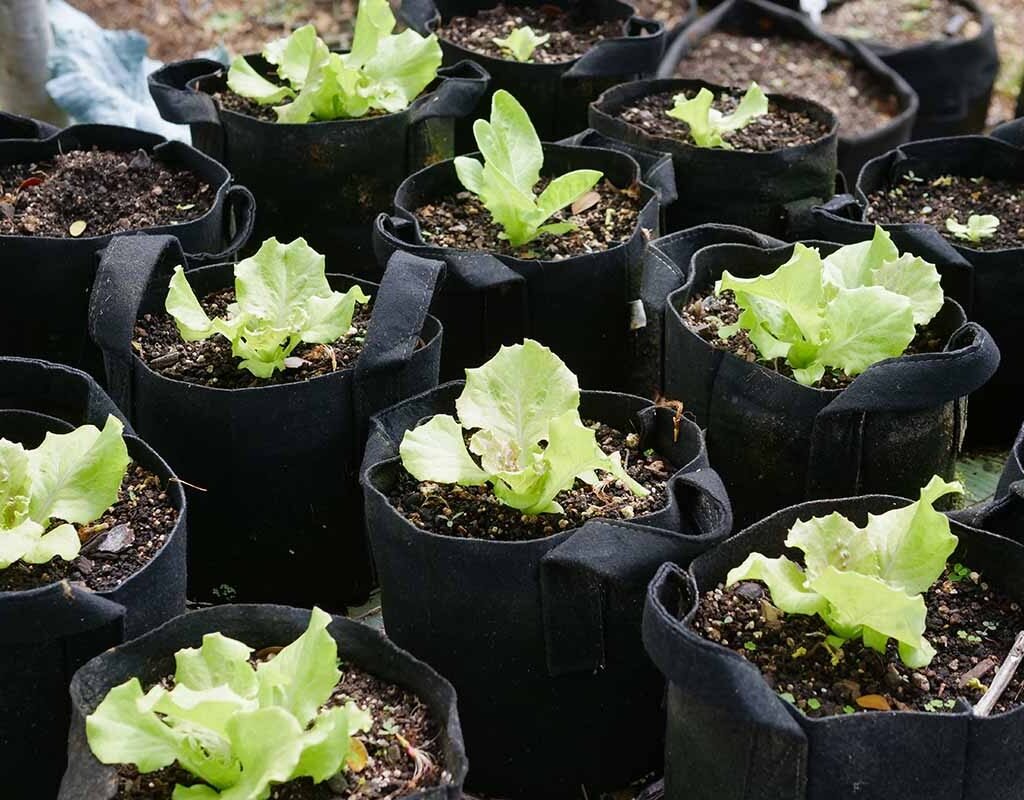
Iceberg lettuce can be grown easily from seeds — and they germinate fast!
Here’s how to start:
- Sow the Seeds:
Sprinkle seeds lightly on a tray filled with moist potting mix. Cover them with a thin layer of soil (just 1/8 inch). - Water Gently:
Mist the soil using a spray bottle. Avoid overwatering — it should be moist, not soggy. - Provide Light:
Place the tray near a bright window or under indirect sunlight. Lettuce seeds need light to germinate, so don’t bury them too deep. - Wait for Germination:
Seeds typically sprout within 3–5 days. When seedlings grow 2–3 inches tall and have at least 3–4 true leaves, they’re ready to be transplanted.
5. Transplanting Seedlings into Hanging Bottles
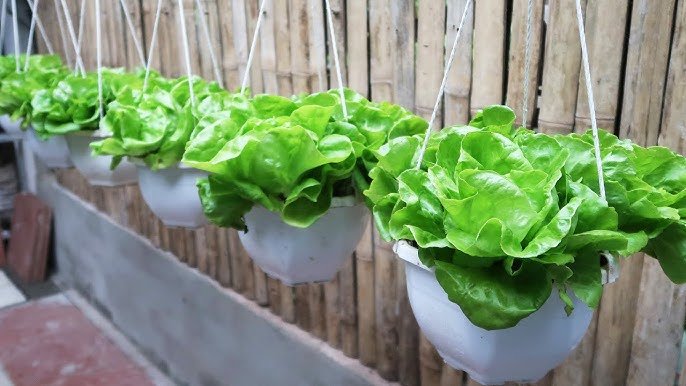
Once your lettuce seedlings are sturdy enough, carefully move them into the prepared bottles:
- Fill the Bottle with Soil:
Leave about 1 inch of space at the top for watering. - Make Planting Holes:
Use your finger or a stick to create small holes in the soil — about 2 inches deep. - Insert Seedlings:
Gently place each lettuce seedling into a hole and cover the roots with soil. - Water Lightly:
After transplanting, water gently to help the seedlings settle in. - Hang the Bottles:
Hang them in a spot with bright but indirect sunlight — like a balcony railing or window grill.
6. Ideal Growing Conditions for Iceberg Lettuce
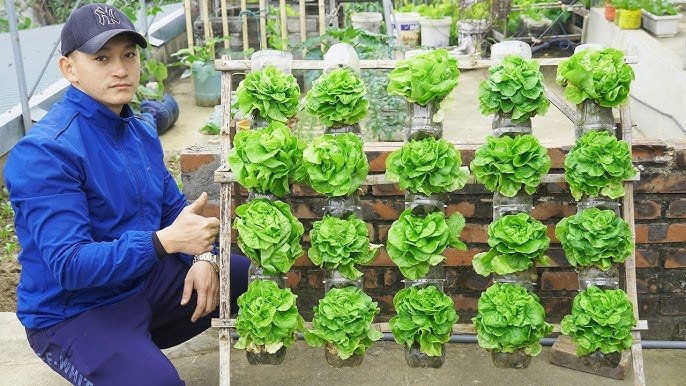
Lettuce thrives in cool, mild conditions, so try to maintain the right environment:
- Temperature: 15–22°C (59–72°F) is ideal.
- Sunlight: 4–6 hours of sunlight daily; too much heat can cause bolting (flowering).
- Watering: Keep soil consistently moist. In hanging bottles, water tends to dry faster, so check regularly.
- Humidity: Moderate humidity helps prevent wilting.
If you live in a hot climate, hang your bottles in a partially shaded area or use a light net cover.
7. Feeding and Fertilizing
Iceberg lettuce is a heavy feeder that loves nutrient-rich soil. You can use organic fertilizers to encourage lush, healthy leaves:
- Mix a small amount of organic compost or worm castings into the soil before planting.
- Every two weeks, apply a liquid fertilizer (like compost tea or seaweed extract) diluted with water.
- Avoid over-fertilizing, as it can cause bitter leaves or soft heads.
A good feeding schedule will result in big, crisp, and flavorful lettuce heads.
8. Watering Tips for Hanging Bottles
Since hanging containers are more exposed to air and sunlight, they can dry out faster than ground soil. To keep your lettuce healthy:
- Water once daily in cooler weather or twice daily during hot days.
- Use a spray bottle for young seedlings and a watering can for mature plants.
- Ensure excess water drains out from the bottom holes — standing water can lead to root rot.
If you want to save effort, you can even turn this into a self-watering system by hanging a second bottle below to collect and reuse water!
9. Protecting from Pests and Diseases
Even in containers, lettuce can face pests like aphids, slugs, or caterpillars. To protect your plants:
- Spray a mild solution of neem oil and water weekly.
- Keep the surrounding area clean and dry.
- Check the undersides of leaves regularly and remove any pests manually.
- Avoid overwatering to prevent fungal diseases.
Container gardening reduces pest risk, but it’s always good to stay vigilant.
10. Harvesting Your Iceberg Lettuce
The best part of the process — harvesting your fresh, crunchy lettuce! 🍃
- Iceberg lettuce typically takes 70–90 days to form a full head.
- When the outer leaves look firm and the head feels solid when squeezed, it’s ready.
- Cut the entire head at the base using a clean knife.
If you want a continuous harvest, you can also harvest outer leaves first, leaving the inner part to keep growing.
After harvesting, rinse your lettuce with cool water, pat dry, and refrigerate for freshness.
11. Reusing and Expanding Your Hanging Bottle Garden
Once you’ve successfully grown and harvested your first batch, it’s easy to expand your setup:
- Add more bottles vertically to create a hanging garden wall.
- Combine lettuce with other leafy greens like spinach, arugula, or pak choi.
- Reuse the same bottles after cleaning them thoroughly.
Each bottle becomes a self-contained micro garden that adds greenery and life to your home.
12. Common Problems and Simple Solutions
Here are a few common issues you might face — and how to fix them:
- Small heads: Usually caused by poor light or lack of nutrients. Move bottles to a sunnier spot and feed with compost tea.
- Bolting (flowering early): Caused by high heat. Provide shade during hot afternoons.
- Yellow leaves: Often a sign of overwatering or nutrient deficiency. Check drainage and feed lightly.
- Root rot: Improve drainage and reduce watering frequency.
With proper care, you can enjoy healthy plants all season long.
13. Environmental and Lifestyle Benefits
Growing lettuce in hanging bottles is more than a gardening trick — it’s a step toward sustainable living.
- Reduces plastic waste by reusing bottles.
- Saves water through efficient container watering.
- Promotes self-sufficiency by producing your own food.
- Improves air quality and adds natural beauty to your space.
Even a small setup can make a big environmental difference!
Conclusion
You don’t need a large garden to grow fresh, crisp iceberg lettuce. With just a few recycled plastic bottles, some soil, and a handful of seeds, you can create a hanging lettuce garden right at home.
This clever method is perfect for beginners, urban gardeners, or anyone who loves green living. It’s affordable, eco-friendly, and incredibly rewarding — every harvest feels like a small victory for sustainability.
So grab some bottles, hang them up, and start your own vertical lettuce garden today. In just a few weeks, you’ll be enjoying cool, crunchy, homegrown iceberg lettuce straight from your hanging bottles — fresh, delicious, and chemical-free!
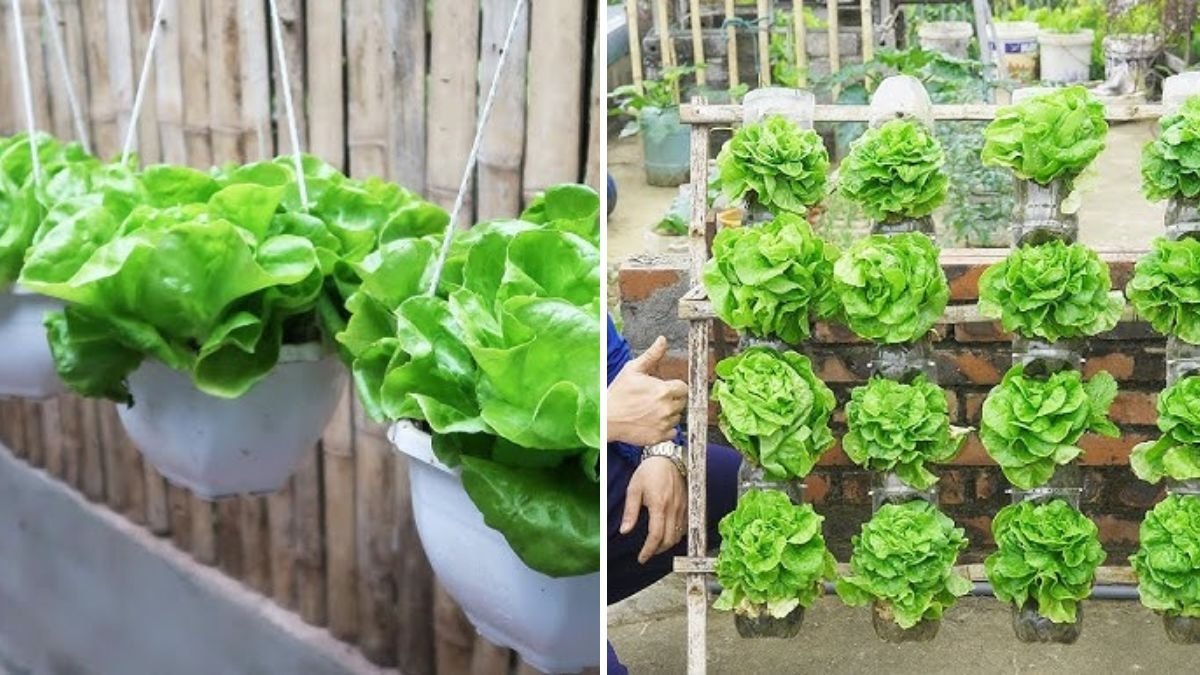

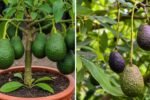
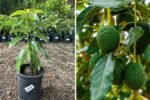

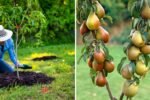
Leave A Comment